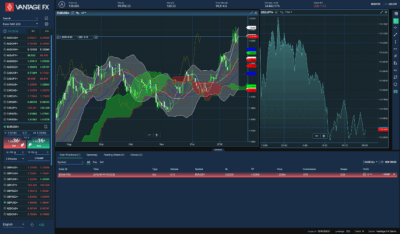Bull Market Definition
buy stealthcoin: How to Buy StealthcoinXST Crypto Step by Step
9 de outubro de 2020Aurum PropTech Rights Issue 2022 Rights Issue Detail
14 de maio de 2021Bull Market Definition

Some small-cap stocks tend to be less correlated with larger benchmark indexes but may follow the small-cap benchmark indexes like the Russell 3000. Some stocks (i.e. small caps) may not be correlated with broad market trends so make sure that you are using the particular benchmark as a compass when trading them. The stock market has been commonly trading with divergence at them between the SPY, QQQ and DIA benchmarks. Therefore, make sure whatever stocks you are trading is correlated with the correct benchmark. Usually banks and financials move best with the SPY and DIA, while technology stocks tend to move with the QQQ.


https://forexanalytics.info/ may say they’re bullish or expect a bull market to arrive when they believe that there will be prolonged periods of increase in the stock market. Here are some tips to take into consideration when trading in a bull market. Remember, active intraday traders often focus on the extreme short-term price action and often times miss the forest from the trees. It’s important to always gauge if you are trading in a bull market and adjust your strategies to accommodate conditions. Make no mistake, traders do lose money in bull markets so it’s prudent to take these tips into consideration. Investors waste a lot of energy trying to guess when a bull market is ending so that they can sell or guess when a bear market is ending so that they can buy.
The post financial crisis bull run
You need to look for signs that the market is about to become bearish. For example, if there are more poor performance figures or a dip in the economy, be careful. When there is a strong economy, businesses report stronger profit figures than during a recession.
https://day-trading.info/s tend to go through periods of boom and bust known as bull markets and bear markets, respectively. The length of a bull market can vary widely, with some lasting just a few months, while others may last years. The commonly accepted definition of a bull market is when stock prices rise by 20% after two declines of 20% each. The global financial crisis of 2008 was, at the time, the most severe market crash since the Great Depression. Therefore, it is only possible to identify the end of a bull market retrospectively. Most major stocks follow the indexes and tend to move higher with the benchmarks.
Generally in line with the falling GDP, however, prices can start falling already prior. A bear market is typically defined as when stocks fall by 20% or more after a 20% peak. In this period, negative sentiment starts to fade as business conditions improve and economic data becomes stronger. The steady flow of good news encourages more and more investors to move back in, which sends prices higher. The public participation phase tends to be the longest lasting of the three bull market phases, and also the one with the largest price movement. Long positions are taken up by technical and trend traders as the new upward primary trend confirms itself.
There are several other types of investing strategies typical for a bull market. They often vary from bear market strategies due to more favorable market conditions. Having a higher stock allocation in a bull market is optimal as there can be more returns, whereas in a bear market investors remain more cautious. A secular bull market is an overarching trend that lasts much longer than a bull market in isolation.
Examples of bull market
But most short positions are much shorter in duration – a few months to a few years at most. There are several practical limitations that limit how much time traders can… On any given day in a bull market, certain sectors will tend to outperform the rest of the market. If you specialize in just one or a few sectors, make sure you are aware of the leaders in the sector to play the correlation . The average bear market has lasted 1.3 years, with average losses of 36%.

This can be observed by watching the leaders in the sectors as well as knowing the technical support and resistance levels that can determine a market reversal to a bear market. A bear market is a period when stocks are generally falling, and the economy is doing poorly. If the idea of a bear market coming in and wiping out years of gains makes you feel sick, then conservative investments may be right for you. These include options like cash, money market funds, CDs, and bonds.
Historic bull markets
These are just a few examples of some of the biggest bull markets in history. There have been many others, each with its own unique set of circumstances and drivers. Traders employ a variety of strategies, such as increased buy and hold and retracement, to profit off bull markets. The 1990s saw the largest total gain of any bull market in S&P 500 history, with the index gaining 417.0% in just over 113 months.
Market commentary tends to be optimistic in tone, with investor confidence rising. The sustained increase in the market prices is the result of increased investor confidence. As investors trust the market, they massively buy more shares, thereby trusting the financial markets with their money. Investor expectations about the economy also affect the stock market.
Where’s the bull market? Stock-market investors aren’t buying it. – MarketWatch
Where’s the bull market? Stock-market investors aren’t buying it..
Posted: Fri, 24 Feb 2023 15:43:00 GMT [source]
And, because companies can get higher valuations for their equity, we tend to see high levels of initial public offering, or IPO, activity in bull markets. Broadly speaking, a bull market is a sustained period — usually months or years — when prices rise. The term is most commonly used in reference to the stock market, but other asset classes can have bull markets as well, such as real estate, commodities, or foreign currencies.
It’s easy to interpret the two https://forexhistory.info/s as they are essentially opposites of one another. During a bear market, which is a steep drop in stock prices, you’ll typically also see low investor confidence and a perception that the market is risky. In a bull market, which is a continued rise in stock prices, you’ll likely see high investor confidence and a perception that there’s a strong economic environment. A bull market is an extended period of time when stock prices rise and investors are optimistic. Bull markets can last for months or even years, and stocks tend to outperform other investments like bonds. A bull market is a condition defined as a market that continues to trend higher or uptrend.
- A secular market trend is a long-term trend that lasts 5 to 25 years and consists of a series of primary trends.
- Bull markets are triggered when there’s a lot of demand – when people want to buy.
- An important factor for its sustenance is believed to be the Fed funds target interest rate which was kept close to zero in the US.
A bull market is a financial market characterized by rising prices and investor optimism. It is most commonly used to refer to the stock market, but can also refer to the bond, real estate, currency, and commodity markets. Bull markets tend to last for extended periods of time and are marked by increased demand for securities, rising corporate profits and GDP, and declining unemployment. The opposite of a bull market is a bear market, which is characterized by falling prices and investor pessimism. The terms “bull” and “bear” are believed to come from the way these animals attack their opponents.
Video – investing in a bull market
However, neither the S&P 500 nor the Dow Jones Industrial Average are in bear market territory yet. Let’s break down just what bull markets are, and what they mean for both institutional and individual investors. For example, you might invest $100 weekly, regardless of what the stock market is doing. By doing this, you’re buying more shares when the price is low and fewer shares when the price is high. Over time, this can help to average out the cost of your investment.
Bear Market Rally or New Bull Market? – Morgan Stanley
Bear Market Rally or New Bull Market?.
Posted: Tue, 31 Jan 2023 08:00:00 GMT [source]
People are feeling confident and purchasing items they have put off, such as a new house or a new car. This is a bull market because there is an extended period of rising stock prices. The term bull market is applied to a market in which prices are, on average, rising. At any given time, the market is usually described as one or the other—with bull and bear markets alternating as part of an ongoing cycle. The GDP is falling over a long period of time, and stock prices are plummeting.
During a Bear Market, investor confidence is very low, and usually, the economy witnesses a large sell-off of stocks. In other words, people are taking their money out of their investments and not putting it back in. Corporations lose a lot of their value and a lot of their capital during this time. Some investors will attempt to use risky trade tactics during a Bear Market like short selling and call options. Bear Markets usually follow a downturn in the U.S. economy like after reports of low job numbers, high inflation, or a big raise on income tax. In short, a bear market is when stock prices fall and a bull market is when prices go up.
Find out more about bull markets…
A bull market usually means that there has been a 20% rise in prices over some time , after a previous 20% decline, followed by another 20% decrease. If the prices rise or fall 10% or less, it is considered a market correction phase. The longest-ever bull market started in 2009 after the housing crisis, and it ended abruptly with a sudden Covid-19 pandemic-induced stock market crash on the 20th of February 2020. Information provided on Forbes Advisor is for educational purposes only. Your financial situation is unique and the products and services we review may not be right for your circumstances.
Investors who want to benefit from a bull market should buy early in order to take advantage of rising prices and sell them when they’ve reached their peak. Although it is hard to determine when the bottom and peak will take place, most losses will be minimal and are usually temporary. Below, we’ll explore several prominent strategies investors utilize during bull market periods. However, because it is difficult to assess the state of the market as it exists currently, these strategies involve at least some degree of risk as well. A bull market is a period of time in financial markets when the price of an asset or security rises continuously. Bull market prices trend upwards in the long term, but individual securities’ prices will rise and fall throughout, even if the overall trendline is upwards.
